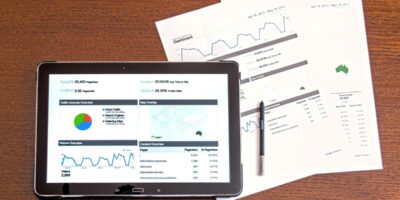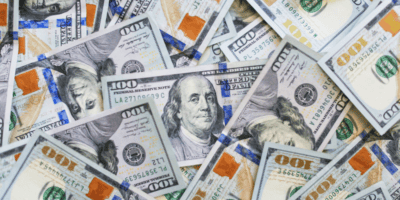Prediction markets are garnering more and more attention as potent tools to forecast future events in this fast-changing world of finance and information. Politics, economics, sports, and scientific explorations are all sites where prediction markets provide a different approach to gauge public sentiment on potential outcomes. Such decentralized platforms allow people to speculate on the chances of an event occurring, after which this collective wisdom usually shares its verdict with predictions derived from traditional forecasting methods. Therefore, to better grasp current trends and interpret prediction markets, any investor, analyst, or interested party would do well to at least become familiar with prediction markets.
Definition of Prediction Markets
In a prediction market, speculators trade contracts for a future event. Contracts are usually binary, such as “Will Candidate X win the election?” and may be priced anywhere from $0 to $1. Upon occurrence of the event, there is a payout of $1 to the holder of the contract; otherwise, the payout is zero. The price now quoted in the market is its own estimate of the outcome’s probability; thus, if the contract is trading for .70, the current market consensus deems there to be a 70 percent chance of the occurrence of that event.” These markets may be operable by centralized platforms or decentralized protocols on a blockchain and can cover virtually any topic: politics, economic indicators, product launches, climate outcomes, and so forth.
How Do Prediction Markets Work?
What makes prediction markets work is their incentive structure. Skin in the game means being financially rewarded for being right, which makes the market very different from opinion polls or an expert’s best level in that it aggregates the beliefs of informed individuals who are motivated to monetize their knowledge.
Here’s how a prediction market operates:
An event is posed as a question that may range from “Will the Federal Reserve raise interest rates next quarter?”
Trade in shares for the answer “Yes” or “No.”
Prices fluctuate with supply and demand.
Prices adjust as new information emerges, with time being closer to the event date.
At the event’s finality, payouts are made to holders of correct shares.
The mechanism essentially grips sentiment as it emerges and distills it into a malleable probability, which is then tracked and studied.
Why Do Prediction Markets Work?
This idea lends itself to the “wisdom of crowds” theory, which says that the average of many guesses turned in by a heterogeneous group of people having some knowledge of whatever it is being guessed at is more often than not closer to the truth than the estimate of an individual expert. Prediction markets are ways of putting this theory into use, where incentives coalesce with knowledge.
Main reasons why prediction markets work:
Motivation for Accuracy: There is a financial reward for correct participants.
Decentralized Intelligence: Draws ideas from people across distances with different insights.
Real-Time Updates: Markets update on the latest breaking news or data.
Transparent Signals: The price of a contract is a signal of collective belief about the set probabilities.
Studies have even gone to shown that prediction markets indeed outperform panels of experts, political polls, and forecasts from the media.
Applications of Prediction Markets
Prediction markets are not confined to politics or sports—they are expanding into various sectors:
1. Political Forecasting
Sites like PredictIt and Polymarket allow the user to trade contracts on all sorts of matters concerning elections or legislative developments, or even geopolitical risks; obviously, these markets have fairly eerie forecasts for major political events.
2. Financial Indicators
Some traders use prediction markets to judge interest rate hikes, inflation figures, or GDP announcements. Alongside some financial indicators, they might give us a more nuanced assessment of economic expectations.
3. Corporate Forecasting
Internal prediction markets are run in companies to predict sales, completion time for projects, or the success of product launches. The employees participate anonymously, and this aggregated data can often yield insights that management tends to overlook.
4. Science and Innovation
Some markets offer a way for participants to predict the timeline for key scientific achievements, like a drug being approved or a breakthrough occurring in quantum computing. They help channel attention and funding toward emerging technologies.
5. Sports and Entertainment
Looking at lighter topics, prediction markets thrive in pop culture and sports, forecasting everything from game outcomes to reality shows, award winners, and even box office numbers.
Blockchain and Decentralized Prediction Markets
The rise of blockchain technology indicates the ushering in of a new wave of decentralized prediction markets. Platforms such as Augur, Gnosis, and Polymarket allow anyone to apply their creativity in either making markets or trading with very little censorship, if at all, and utmost transparency.
Key features of decentralized platforms include
Immutable Records: Trades are recorded on the blockchain and cannot be altered; this principle keeps the whole process fair and transparent.
Borderless Access: Any entity having internet connectivity and a crypto wallet can take part.
Trustless Settlement: Smart contracts execute payouts autonomously based on outcomes.
Token Incentives: Various platforms compensate liquidity providers as well as accurate predictors with native tokens.
These developments are bringing about the transformation of prediction markets into open, international systems whose scope of growth is really massive.
Challenges and Criticisms
However, when it realizes their full promise, prediction markets are faced with quite a few hurdles:
Regulatory Ambiguity: In many countries, prediction markets are seen as gambling and face a legal ban.
Liquidity Issues: Low participation hinders the accuracy of the prediction.
Manipulation: Well-funded parties might be able to manipulate prices.
Ambiguous Questions: Poor wording about the question or disputes about the outcome will reduce credibility.
But as the system matures, more participants come in, and many of these problems are already being solved through better platform design and clearer rules.
The Role of Prediction Markets in the Modern World
In an era of misinformation, echo chambers, and split media, prediction markets provide a welcome alternative. They cut through the noise with truth aligned with financial incentives. Probability-based insights from these markets can be of help to governments, corporations, and individuals, whether for coping with a major economic shift, mastering the impending big tech innovation, or hedging political risk.
Further, with the grounding of these newly introduced tools with other existing methods of forecasting, stakeholders shine new light on necessary issues, thus building more robust models and assisting in decision-making at all levels.
Final Thoughts
Prediction markets can tell us quite a bit about people’s real feelings toward a certain event or even how likely that event is going to materialize. Investors, policy analysts, or anyone interested in such items could do well by taking notice of the price signals offered by these prediction markets because they more accurately represent the future in comparison with much of the conventional wisdom. If you want a snapshot of market prediction today, prediction markets provide a fast, crowd-powered window into tomorrow.







